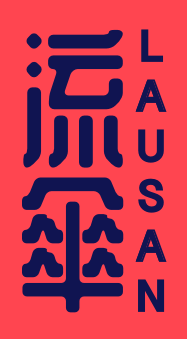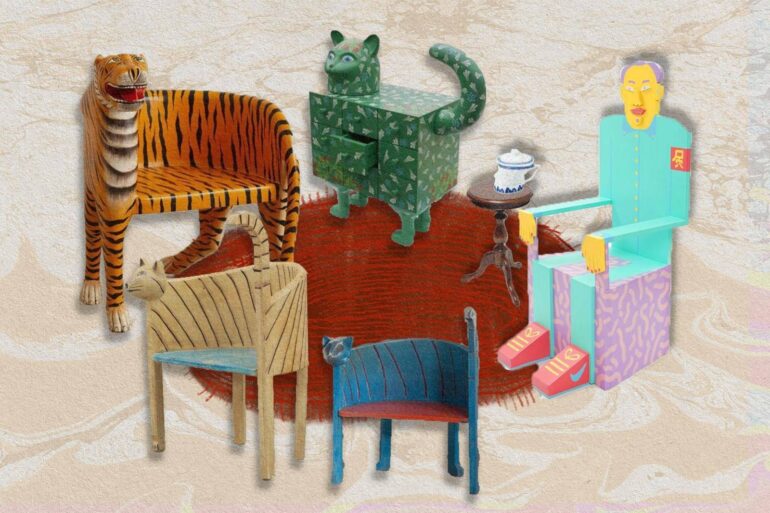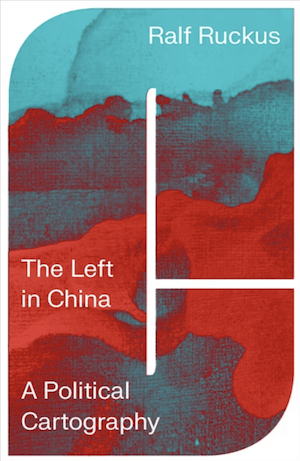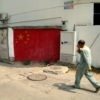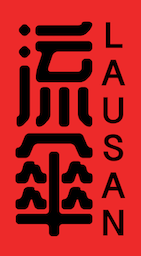Ralf Ruckus’ latest book The Left in China provides a critical history of grassroots worker, peasant, student, feminist, and migrant resistance in the People’s Republic of China (PRC) that forcefully confronts and dispels the idea that the Chinese Communist Party (CCP) presides comfortably over a homogenous “left” in China. Aside from Ruckus’ earlier book The Communist Road to Capitalism, such a history of the grassroots has not been widely disseminated across the Anglosphere, existing mostly in scraps and scattered writing.1 This historical elision may be due to the influence of Maoism and the CCP’s revolutionary struggle to the global Third World movement, which is more familiar and marketable to publishing centers in the West. Ruckus’ historical synthesis of non-party Left opposition is even more valuable as a resource in this light.
Still, we must ask: Why do many leftists continue to promote the right-wing, statist policies of the Chinese Communist Party (CCP) and disparage fellow workers and dispossessed in China under the banner of “socialist internationalism”? Ruckus argues that some leftists “fall for the costuming” of communist pageantry and “endorse the CCP’s rightist policies and should be called out for it.” While it is tempting to ascribe this attitude to an individual predilection towards racist chauvinism on the part of the US (white) left, it does not fully explain why many young people of color are also “falling for the costuming.” This is not an idle question. It lies at the heart of what many are seeking to build: A post-globalization, non-state-centered, socialist internationalism that can coalesce workers and the dispossessed across every corner of the behemoth of the global market. This task is even more difficult—and critical—in light of the current mutation of hyper-nationalist neo-statism known as the so-called “New Cold War” propelling both US and China’s belligerence on the world stage.
While US leftists have afforded themselves endless differentiation, factionalism, tendencies, and political lines in their discussions of US socialism, they have done so at the expense of the left in China.
As a response to, or perhaps because of, this hyper-nationalist posturing, an identifiable strain of Western leftist discourse on US-China has veered into a distinct type of dehumanization: While US leftists have afforded themselves endless differentiation, factionalism, tendencies, and political lines in their discussions of US socialism, they have done so at the expense of the left in China. In particular, they have done so by homogenizing the left in China as represented solely by a monolithic CCP. For these leftists, if meaningful non-party left opposition is not simply inconceivable within their framework of statism and party vanguardism, then, worse, any hint of it is smeared as foreign-backed attempts to attack China.
While it is necessary to avoid being co-opted by the state interests of the imperialist West, it is just as important to avoid evacuating the real and existing agency of proletarians on the other side of the world. As it stands, some in the US left are engaged in a unique mix of classical Orientalism—a projected idealization of the other—and a left chauvinism that purports to know better about Chinese issues than Chinese (leftists) themselves. The US’ military and economic hegemony is rightfully acknowledged across the global left. Yet, many of these same socialists who oppose their own capitalist governments argue staunchly that supporting the Chinese government is the same as supporting its people. To these socialists, China’s imperial ambitions—as a staunch WTO member, the largest global creditor, and second largest economy and military in the world—somehow remain consonant with its continuing claim to be a member of the Third World peacefully seeking “multi-polarity.”
The Left in China is thus a timely and clarifying intervention in our current conjuncture, as a resurgent consciousness of socialism has grown since the global uprisings of 2019-2020. Ruckus continues to deepen the historiography of Chinese struggle from below that he developed in his previous book, drawing on decades of political work documenting grassroots peasant, migrant, and women’s struggles in China at Gongchao. His focus on tracing currents of non-party left opposition informs his organizing framework of what he calls the “left-wing,” which he appends to numerous initiatives and projects. The benefit of this broad understanding of “the left” in China is the ability to understand resistance based on liberatory demands—which involve what Ruckus calls “power distribution/repression” and “wealth distribution/exploitation”—bubbling up from the grassroots through a range of actors across society without getting mired in institutional histories or the already well-documented dissection of Party fractions and academic tendencies like the Chinese New Left.
Ruckus’ focus on grassroots movements and demands, many of which often do not describe themselves as leftist or Communist explicitly, draws a throughline across the various eras to emphasize the dialectical nature of bottom-up resistance—from peasant, to urban worker, to student movements—that has always surfaced to confront the CCP’s various top-down initiatives and programs. This conceptual move of gathering all manner of non-state resistance risks straying into imprecision—it would be helpful, for example, to include a discussion of what potential hazards exist when we name as “left wing” people who do not articulate themselves or their goals in those terms. Not merely an issue of nomenclature, working out the self-understanding of a local political spectrum is critical for both long-term organizing and action in the heat of the moment.
In the Hong Kong context, for instance, liberals insisted on flattening political differences in the service of movement unity in the fight against the CCP, which they saw as representing “leftism” writ large. Consequently, the broad refusal to acknowledge the existence of a growing right-wing nativist faction within the protests (or, in some cases, the existence of “the right-wing” as a political formation at all) caused a disorientation that largely capitulated the movement to the decisiveness of the right by the end of 2020.
Not merely an issue of nomenclature, working out the self-understanding of local political spectrums is critical for both long-term organizing and action in the heat of the moment.
That said, Ruckus’ careful attention to historical detail allows the categorical broadness of “the left” to instead draw out the depth and continuity of non-party dissent that suffuses the PRC’s history. Given the way that such struggle has often been caricatured or instrumentalized by outsiders (from the Western cooptation of the student demands for marketization alongside political liberalization in 1989 to the leftist oversimplification of revolutionary leftism as the sole purview of the Party), this insistence on the complexity of political thought within the left in China is critical. That there is variation and a multitude of avenues for leftist thought is not news. But, it is a critical reminder for seasoned analysts and a necessary briefing for newcomers that actors on all sides of the so-called “New Cold War” continue to reduce China’s political scene into homogenous categories for their own purposes.
With many now struggling to define what the “left” is on a global scale, Ruckus insists that we must push past nostalgic and idealized imaginations of the Chinese (state) “left” and understand its existing forms today in a specifically Chinese context. But he does not call to fetishize the local as a pure and idyllic other half to the corrupt West, which some Chinese leftists themselves do. This simply reiterates the same Cold War civilizational binarism but in reverse. Instead, Ruckus details how the long history of leftist opposition in the PRC is inextricably tied to the trajectory of the country’s integration into the global capitalist market—it is uniquely local but shot through with global dynamics. Employing site-specificity to avoid homogenizing a global leftist politics is as important as avoiding its use to homogenize and idealize the local when it comes to defining the left in China. (Likewise, we should question the Party-State’s homogenizing claims to a singular Chinese socialist developmentalism and unique relations to the market, civilization, and Marxian teleological history.)
Ruckus does not reproduce this state discourse of singularity that leaders of the CCP have used to bolster its nationalist cultural program, but rather illuminates localized political orientations that remain obscure for those outside China (such as Maoist Right to the Maoist Left, rebel workers, grassroots socialist feminists) in order to break the ideological notion of the all-encompassing Party-State that totally determines the Chinese left’s parameters.
Each chapter covers a specific social movement that expressed left-wing demands from 1949 until the present, which Ruckus helpfully breaks down in his introduction with a table that lists “confrontation and period,” “discontent and struggle,” and “actors and their social or political demands.” Unlike other studies of social movements in China that tend to focus on a specific era or category of political actor, Ruckus’ broad interpretation of left-wing demands allows him to “find” and harmonize opposition across PRC history, and to give treatment and attention to struggles that are either obscured (radical workers demanding socialist democracy in the workplace in 1989) or considered marginal or irrelevant to traditionally considered industrial worker’s movements (feminist reproductive protests).
Most helpfully, Ruckus uses a series of political graphs to distinguish between political spectrums in capitalist societies (where the left to right would range from anarchists to fascists respectively) and how such a graph morphs when describing a socialist society (where the division is more prominently between left-collectivist and left-exploitative factions in the socialist and transition period) and how that shifts radically across time, with the introduction of the “right-exploitative” side of the graph in the capitalist period. This fine attention to detail is appreciated, though one fails to see how it differs from what he somewhat cavalierly dismisses as the study of ideological debates and its impact on social movements (“no more than a mental exercise that earns an author academic credit”).
Ruckus’ writing is clear and not overly dependent on specialized language, despite untangling complicated historical developments across a 70-year period. This clarity is important, given that he aims for the book to provide the necessary information for the global left to make up its own mind: support authoritarian socialism or “follow and support the social struggles of workers, peasants, migrants, and women*.” In some instances, this focus on clarity, however, verges into the mechanistic—each chapter ends and begins with the same phrase “in sum” followed by a neat overview of the sites, people, and arguments that he outlines.
In other parts, language choices highlight some of the conceptual oversights of the book. Ruckus devotes time to detailing the central role of women’s struggle, and their ongoing subjugation, across eras in the PRC. In order to include trans and non-binary gender identities within this history, he continues employing his unique nomenclature of “female*/women*” from his earlier work, and which he applies to every single instance of the word throughout the book (rather than, say, an explanatory footnote ahead of each chapter). This does not invalidate Ruckus’ important work highlighting Chinese feminism nor does pointing out the clunky language choice dispute the importance of his recognition of gender variance or the political agency of non-cis identities that fall under the umbrella of the category of “woman.” But as it stands, it is both awkward to read and drives home how none of the struggles that Ruckus documents are actually (by his accounting) led by or primarily concerned with specific trans, non-binary or queer issues beyond a generalized resistance to entrenched Maoist and Confucian patriarchal hierarchy.2
We might hazard a guess that the general absence of visible trans/non-binary feminist organizing aside from defensive (protecting existing rights) cis-feminist activism may be due to the reactionary conservatism of Xi Jinping’s administration. In this atmosphere, even the most benign expressions of LGBTQ acceptance in China have faced rapid social clawbacks secured through intense repression of social justice organizing.3 This seachange is entwined with the state’s biopolitical reassertion of patriarchal family norms, and thus suggests a good deal of overlap between cis and trans women’s resistance—but they are not commensurable and can indeed often diverge.
This is also not a call for an additive approach, where simply adding a trans/non-binary struggle would be “enough.” Rather, it is to say that a variety of heterogeneous viewpoints exist within gender-based resistance to patriarchy as it does within left-based opposition. Given the real import of ideological and practical debates amongst different tendencies amongst even the grassroots left in China, as Ruckus historicizes, it is similarly important to not give short shrift to debates that occur under the broad umbrella of anti-patriarchal and gender/sexuality based resistance. In fact, the divergences and debates that take place across difference (in gender identity, for example) are constitutive of the open and collective democratic practices that the state represses.
The divergences and debates that take place across difference (in gender identity, for example) are constitutive of the open and collective democratic practices that the state represses.
It is also worth pointing out that, much like in the US, LGBTQ issues have rapidly become a cipher through which to contest sharpening divisions across society. For example, some Chinese left critics have developed a queerness that serves statist and nationalist ends by reconstituting a specifically “Chinese” queerness that is the radical counterpart to the queerness of the imperialist West, or its “lackeys” embodied in queer Taiwanese national identity. For their part, the conservative elements in the Chinese state have used LGBTQ activism (including #MeToo organizing) as another example of “colluding with foreign forces” and attempts to destabilize the regime. Meanwhile, many activists themselves engaged in LGBTQ issues have found that it has expanded their general political analysis and practice on a broader scale. These grassroots social currents amongst the broad progressive left have much in common with the broad feminist movement—both in terms of aims, and the repression they face—but they should also be considered in their own right.
Despite the valorization of the grassroots left, Ruckus ends on a rather bleak and, sadly, realistic note given the developments in China since his last book was published in 2021: The CCP has developed its “flexible authoritarianism”—consisting of sophisticated cooptation methods such as bureaucratic “pressure release” and institutional absorption, combined with more standard forms of physical repression such as policing, surveillance, and incarceration—to such a degree that open political organizing is practically impossible. He notes that while socialists must draw their practice from grassroots left-wing demands, that may simply not be enough in this specific moment where even the most benign defense of existing rights (rather than crossing political red lines such as questioning the CCP’s legitimacy) is met with intense state repression.
What this means for practical on-the-ground action is not clear. Still, the demand for a materialist understanding of the country’s political cartography is a critical first step for responsive political action that engages those with left-wing demands, rather than serving the self-burnishing image of the state that claims the role of a liberatory force in spite of its repressive actions across the world. This brand of statist hypocrisy should be concerning—not alluring—to those in the West who have witnessed the same lies about the liberatory mission of an imperialist liberal democratic capitalism.
Getting it right is all the more important as millions of young people now wish to plug into socialist and leftist causes around the world. Accurately understanding the material conditions of peasants, proletarians, and the dispossessed In China and around the world is the first step towards refusing nationalist and capitalist developmentalism, the main driver of today’s global military tensions. The Left in China is an invaluable resource for us all as we continue along that path.
Ralf Ruckus has been studying the social, economic, and political situation in the People’s Republic of China for almost twenty years. He co-founded the collective gongchao.org that investigates and documents social unrest and movements in China with a focus on the struggles of workers, migrants, and women.
Footnotes
- See: Kan, San, ed. China: The Revolution Is Dead, Long Live the Revolution. Black Rose Books 35. Montreal: Black Rose Books, 1979; Wild Lily, Prairie Fire: China’s Road to Democracy, Yan’an to Tian’anmen, 1942-1989. eds. Gregor Benton and Alan Hunter, Princeton, New Jersey: Princeton University Press, 2008; “China from Below,” eds. Ralf Ruckus, Daniel Reineke, Jule Pfeffer, and Kevin Lin. Gongchao.org, 2023, https://www.gongchao.org/en/china-from-below/; Franceschini, Ivan, and Christian P. Sorace, eds. Proletarian China: A Century of Chinese Labour. New York: Verso Books, 2022; Zhang Yueran, “Leninists in a Chinese Factory: Reflections on the Jasic Labour Organising Strategy.” Made in China Journal. May-August 2020.
- However, Ruckus does describe in the footnotes to this chapter instances of lesbian and queer movements that exist in tension to more general feminist movements (see page 198).
- See: Qing Na, “‘Traumatizing’: The Transgender Chinese Struggling to Access Health Care.” Sixth Tone. 23 April 2023; Zhang Wanqing and Li Jiaru, China’s First Clinic for Trans Youth a ‘Good Step,’ Advocates Say.” Sixth Tone. 8 November 2021; Tong Xiaoyu, “At This Niche Clinic, No Stares, Smirks, or Stigma.” Sixth Tone. 5 October 2021.
